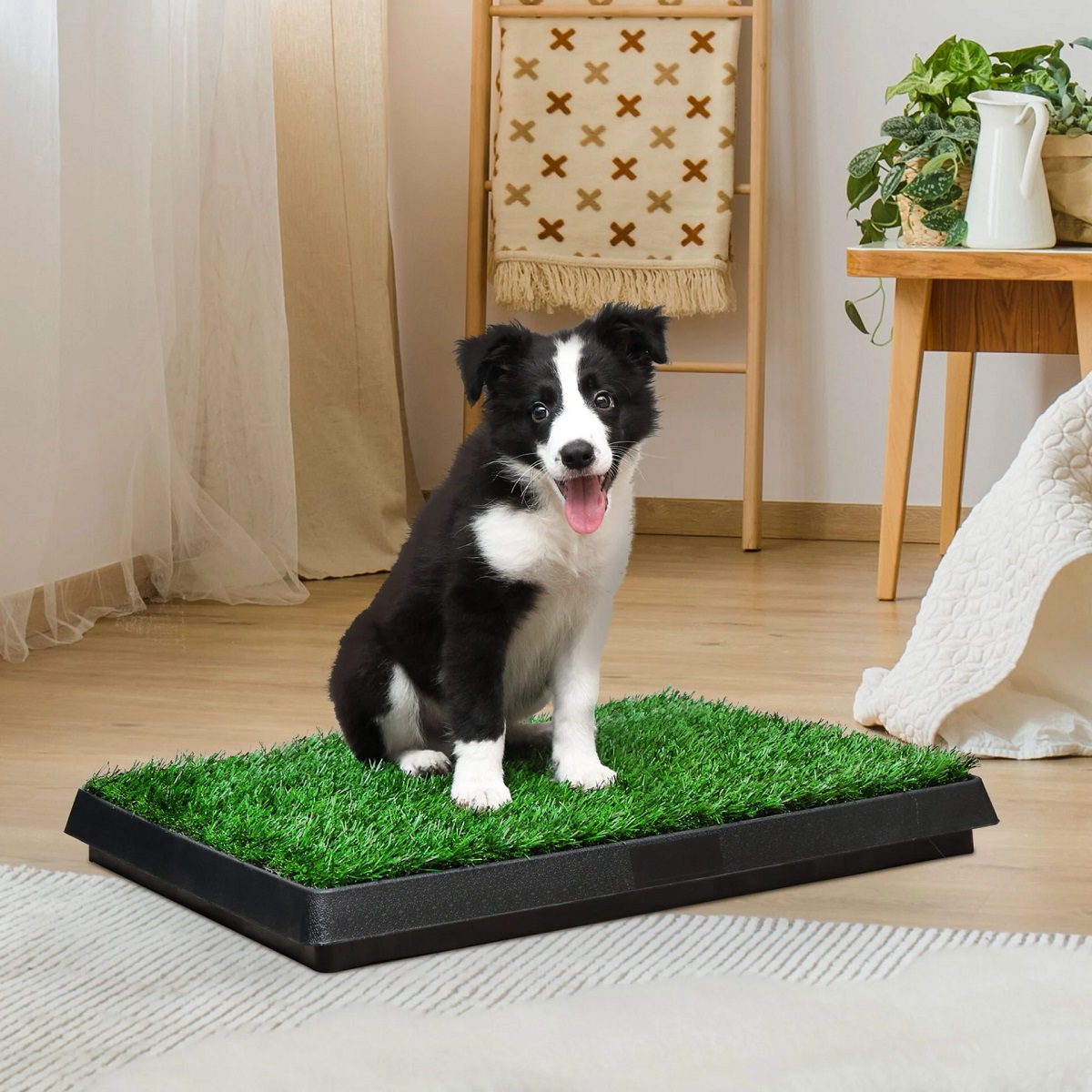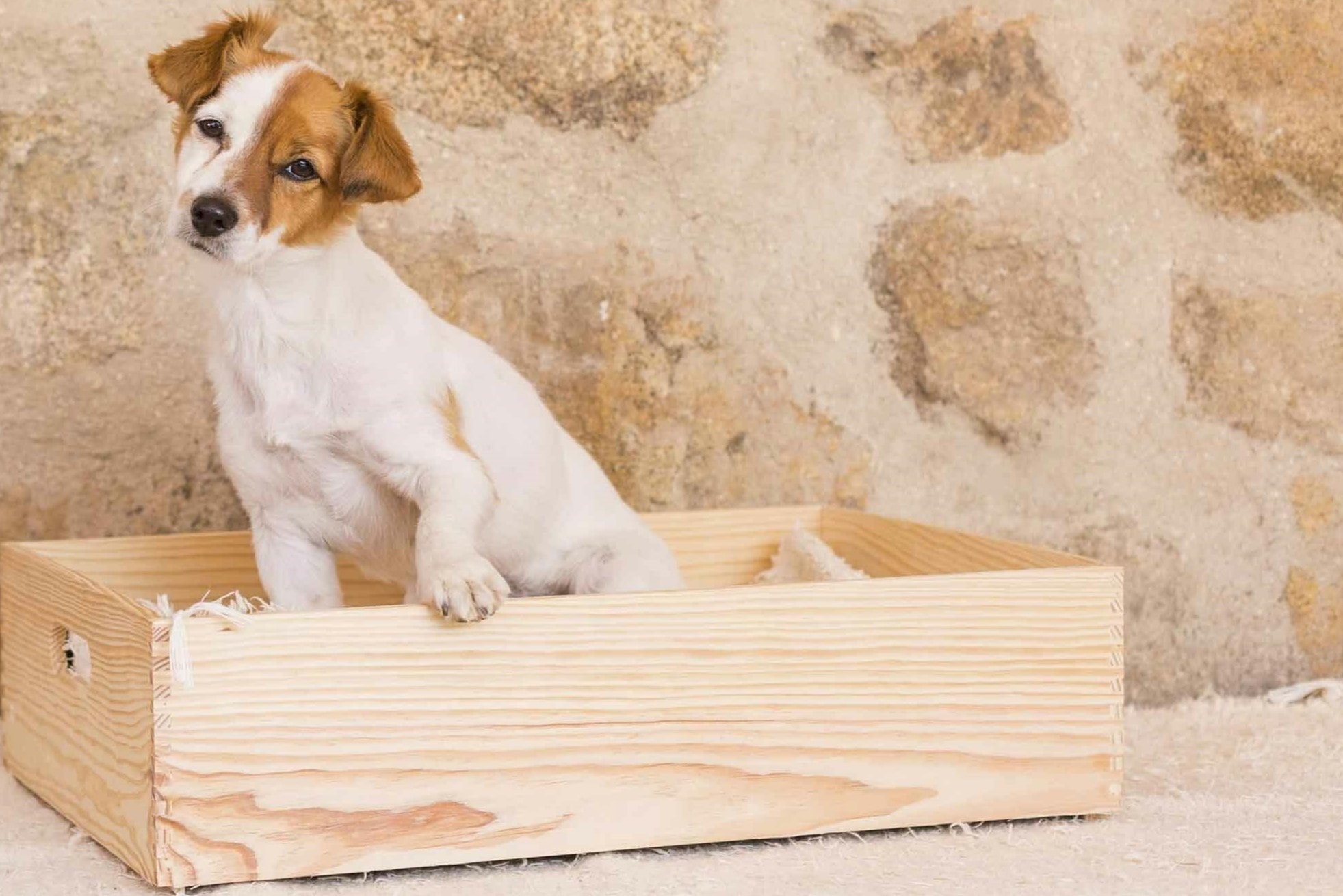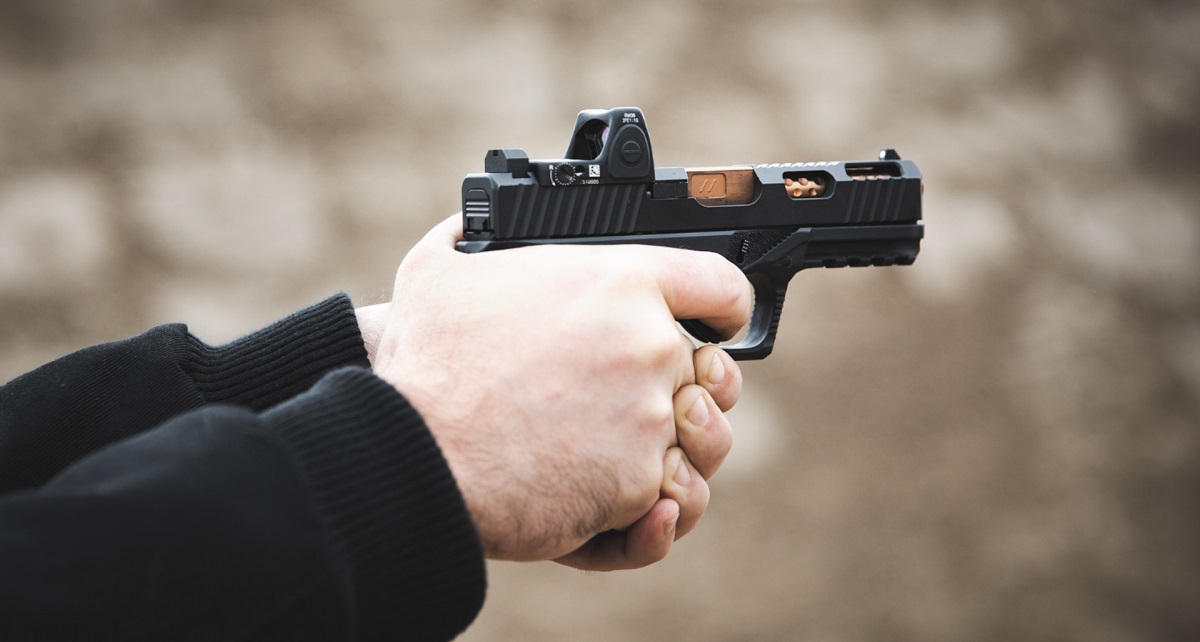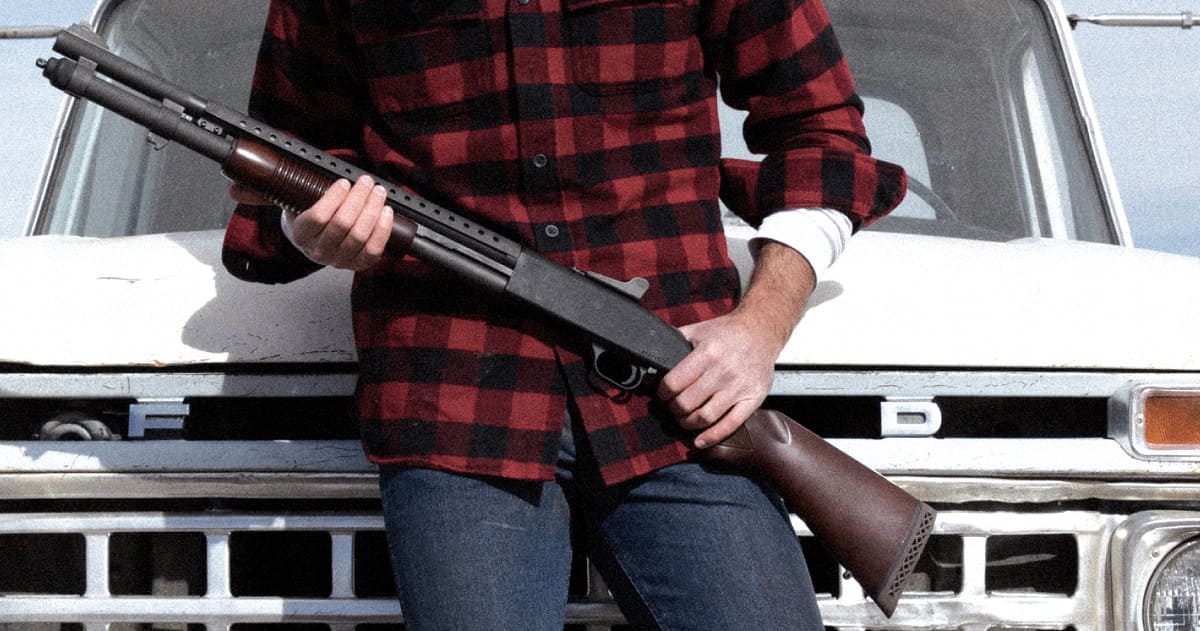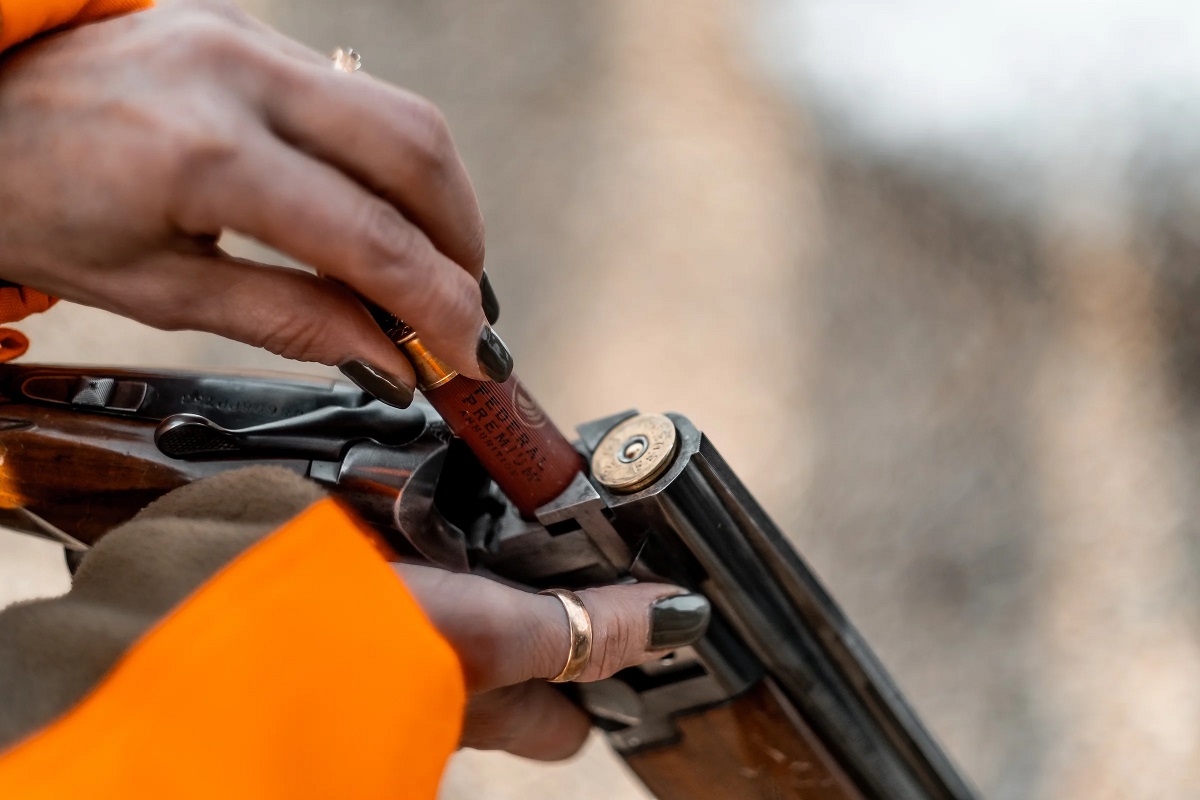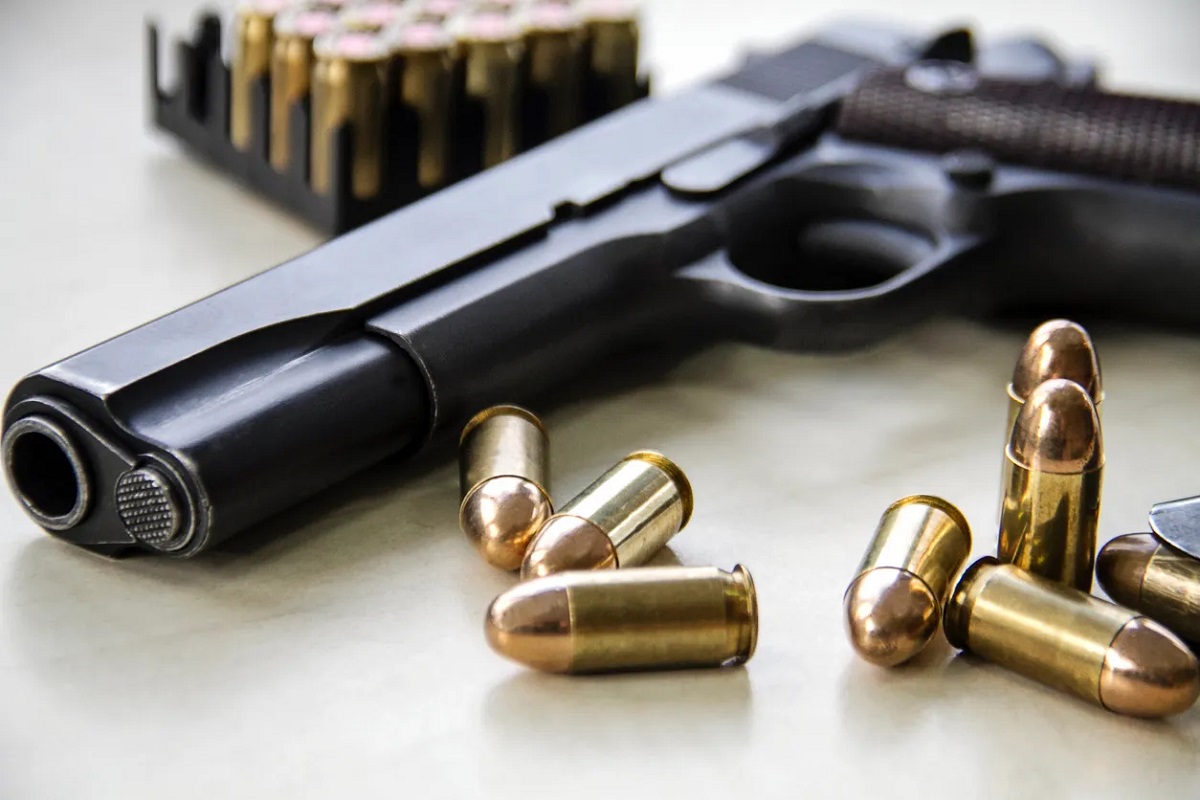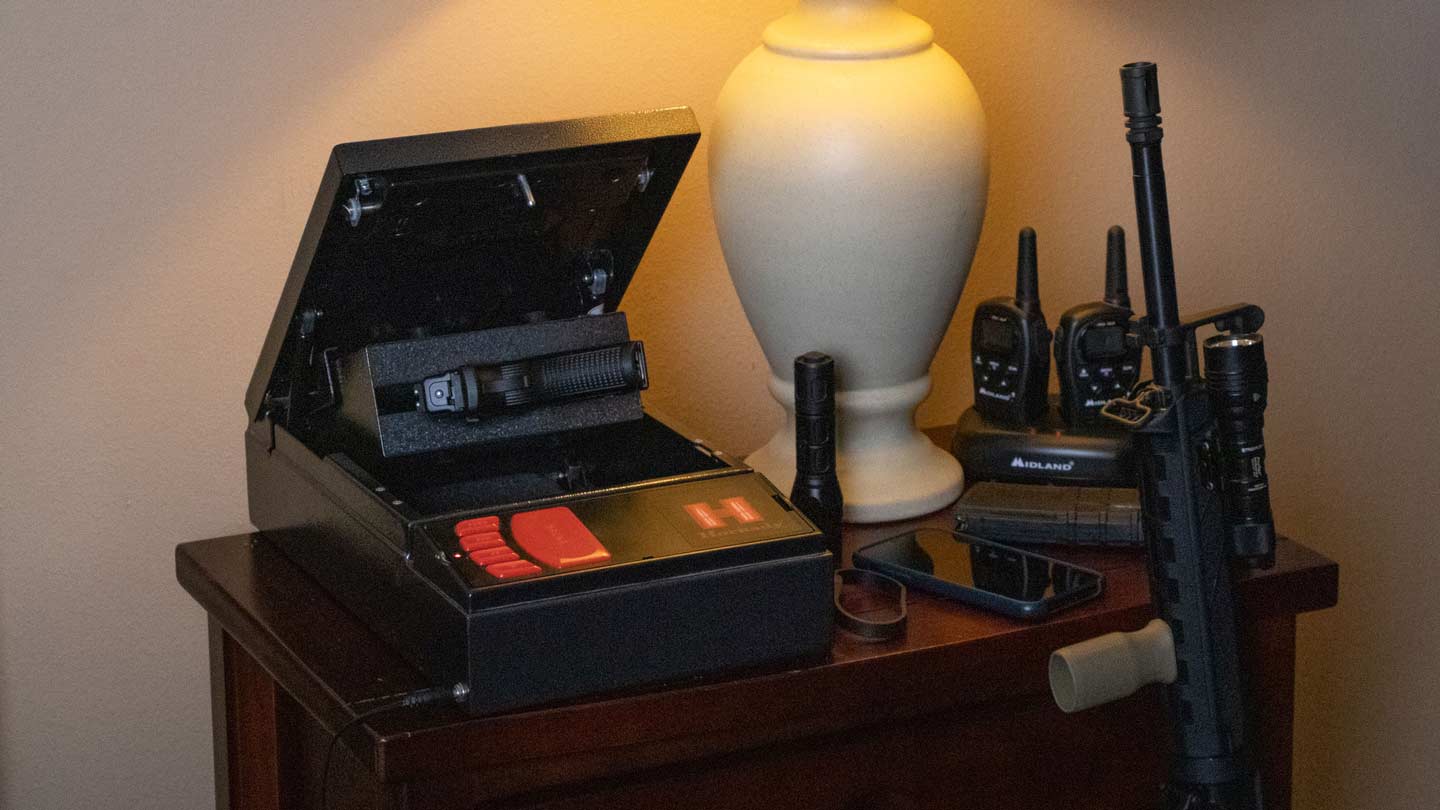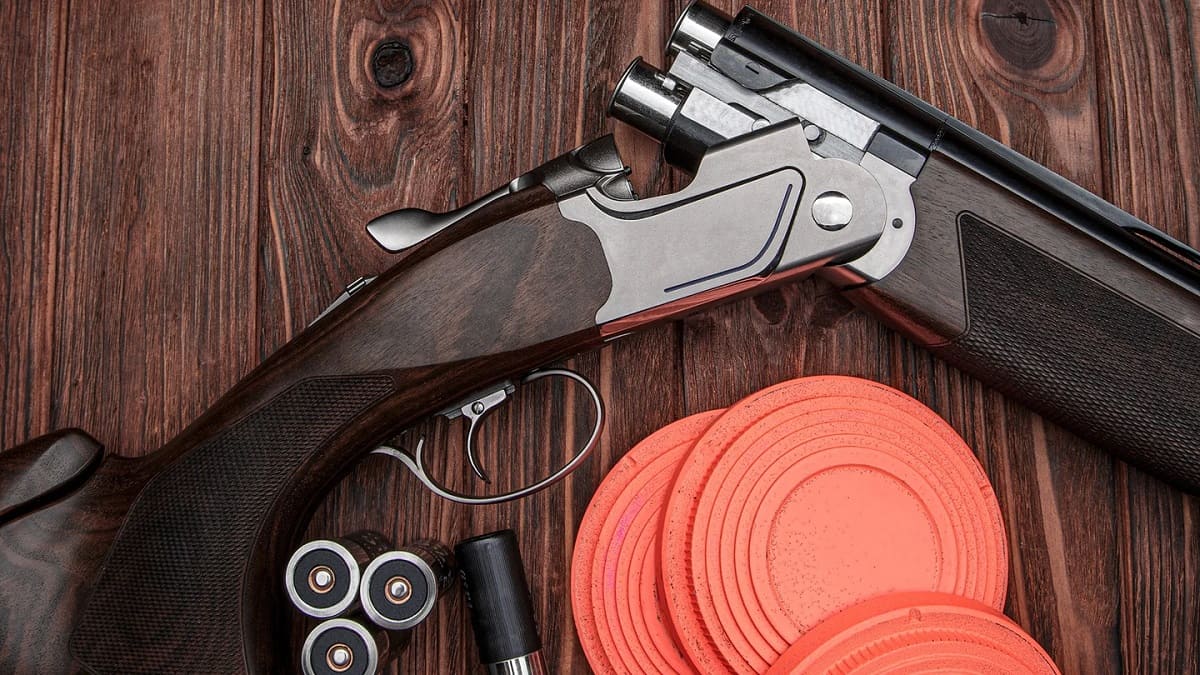Home>Home Security and Surveillance>How To Train A Dog For Home Defense
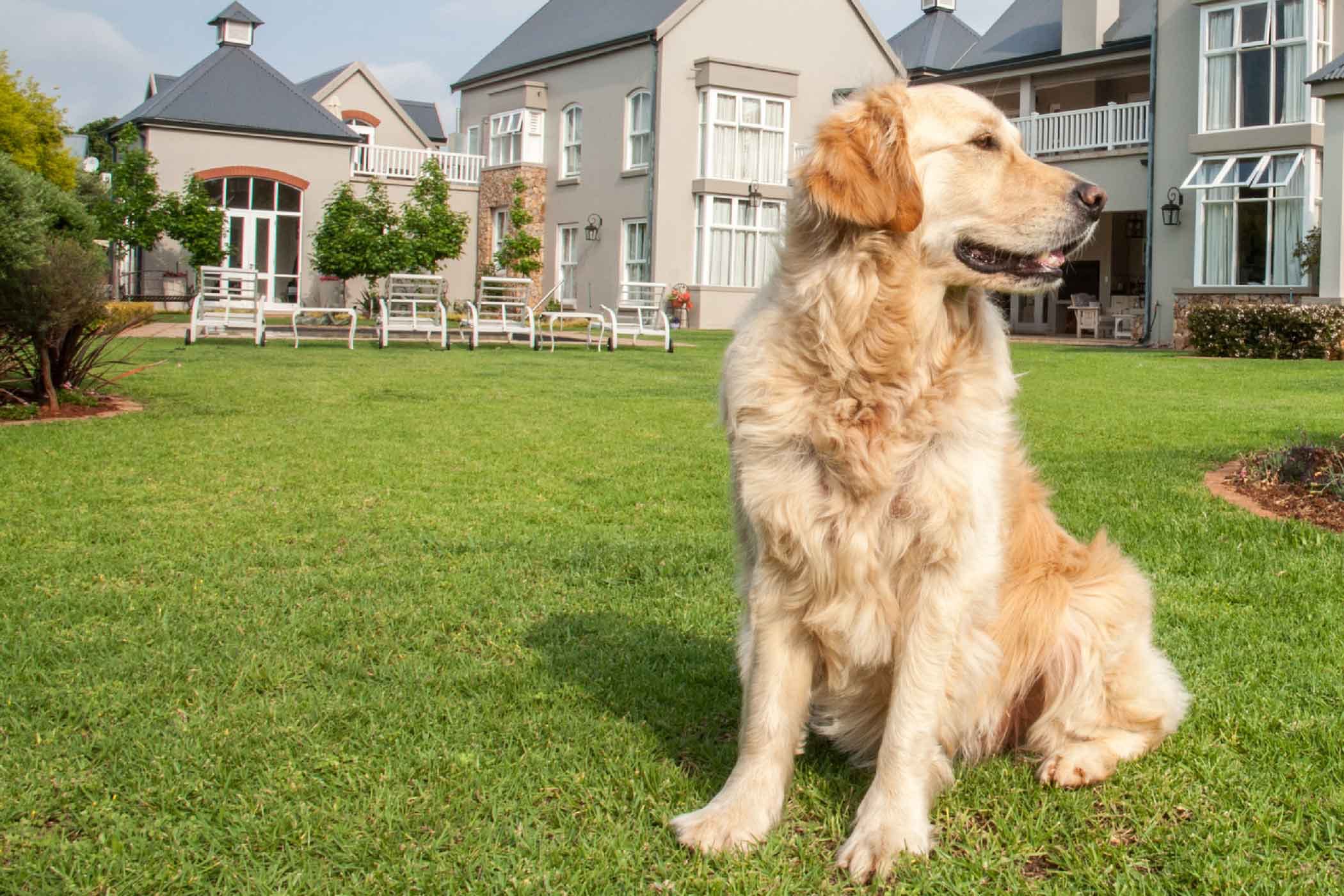

Home Security and Surveillance
How To Train A Dog For Home Defense
Modified: March 6, 2024
Learn how to train your dog to provide excellent home security and surveillance. Protect your home with this valuable home defense training guide.
(Many of the links in this article redirect to a specific reviewed product. Your purchase of these products through affiliate links helps to generate commission for Storables.com, at no extra cost. Learn more)
Introduction
When it comes to protecting your home and loved ones, home security and surveillance systems are essential. However, if you’re looking for an extra layer of defense, training a dog for home defense can be a valuable addition to your security measures. Dogs have been trusted guardians for centuries, and with proper training, they can serve as a deterrent and an early warning system against potential intruders.
In this article, we will explore the importance of training a dog for home defense and provide you with valuable insights into the training process. Whether you’re a new pet owner or have a canine companion already, these training techniques will help you harness your dog’s natural protective instincts and transform them into a reliable defender of your home.
Key Takeaways:
- Training a dog for home defense provides an extra layer of security by deterring intruders, offering early warning, and creating a loyal family companion. It’s a fulfilling and practical investment in home protection.
- Choosing the right breed, basic obedience training, socialization, and advanced techniques are crucial for effectively training a dog for home defense. Consistency, patience, and professional guidance are key to success.
Read more: What Is The Best Dog For Home Defense
Why Train a Dog for Home Defense
Training a dog for home defense offers numerous benefits and can significantly enhance the security of your household. Here are a few compelling reasons why you should consider investing time and effort into training your dog for home defense:
- Deterrence: A well-trained guard dog can serve as a powerful deterrent to potential intruders. The presence of a dog alone can make criminals think twice before attempting to break into your home.
- Early Warning System: Dogs have keen senses and can detect intruders long before humans do. They have a heightened sense of hearing and smell, allowing them to alert you to any suspicious activity or presence near your home.
- Rapid Response: Trained dogs can be taught to respond quickly and appropriately to potential threats. Their instincts and training allow them to act decisively, providing you with valuable time to react, call for help, or find a safe place.
- Companionship: While the primary purpose of training a dog for home defense is security, the bond and companionship you develop with your dog during the training process are invaluable. Your dog becomes a trusted member of your family, offering love, loyalty, and support.
- Reduced Dependence on Technology: While home security systems are essential, they can sometimes fail due to malfunctions or power outages. A well-trained guard dog can provide an added layer of protection even when technology fails.
Training a dog for home defense is not only practical but also fulfilling. It allows you to tap into your dog’s natural instincts and provides mental and physical stimulation for your furry friend. It’s a win-win situation for both you and your dog.
Choosing the Right Breed for Home Defense
When it comes to training a dog for home defense, selecting the right breed is crucial. While any dog can be trained for basic obedience and some level of protection, certain breeds are naturally inclined and better suited for this role. Here are a few breeds that are often recommended for home defense:
- German Shepherd: Known for their intelligence, loyalty, and courage, German Shepherds are one of the most popular choices for home defense. They are highly trainable and instinctively protective of their families.
- Rottweiler: Rottweilers are powerful, confident, and protective dogs. With proper training and socialization, they can become reliable guardians and are known for their loyalty to their owners.
- Doberman Pinscher: Dobermans are fast, agile, and have a strong sense of loyalty. They are highly trainable and excel in protection work with their natural guarding instincts.
- Bullmastiff: Bullmastiffs are large, intimidating dogs with a strong protective instinct. They are known for their calm and gentle nature, making them excellent family pets as well as reliable guard dogs.
- Belgian Malinois: Belgian Malinois are intelligent, driven, and highly trainable. They are commonly used in police and military work due to their agility, sharp instincts, and unwavering loyalty.
While these breeds are often recommended for home defense, it’s essential to consider factors such as your living situation, lifestyle, and the individual temperament and characteristics of the dog. Remember that breed alone does not guarantee a dog’s suitability for home defense. Each dog is unique, and proper training, socialization, and individual evaluation are crucial in determining their capabilities.
Additionally, it’s important to note that training a dog for home defense should not be taken lightly, as it requires time, commitment, and expertise. Consider consulting with a professional dog trainer or a reputable breeder with experience in working and protection dog breeds to ensure you select the right breed for your specific needs and goals.
Basic Obedience Training
Before diving into specialized home defense training, it’s crucial to establish a foundation of basic obedience training for your dog. Basic obedience training lays the groundwork for a well-behaved and responsive dog, making further training much easier. Here are some key aspects of basic obedience training:
- Command Training: Teach your dog essential commands like sit, stay, down, and come. These commands create structure and help establish your role as the leader. Use positive reinforcement techniques such as treats and praise to motivate and reward your dog for following commands.
- Leash Training: Proper leash training is essential for control and safety. Teach your dog to walk calmly on a leash without pulling or lunging. Start with short, controlled walks and gradually increase the duration and distance as your dog becomes more comfortable and responsive.
- House Training: Establish a routine for potty breaks and teach your dog appropriate elimination areas. Consistency and positive reinforcement are key to successfully house-training your dog.
- Socialization: Expose your dog to various environments, people, animals, and stimuli to build their confidence and adaptability. This helps prevent fear-based aggression and ensures that your dog remains calm and controlled in different situations.
Consistency, patience, and positive reinforcement are crucial when undertaking basic obedience training. Keep training sessions short and frequent, focusing on one command at a time. Gradually increase the difficulty level as your dog becomes more proficient.
Basic obedience training sets the stage for a well-disciplined and responsive dog, which is essential for more advanced home defense training. It establishes a strong foundation of trust and communication between you and your dog, forming the basis for a successful training partnership.
Socialization and Exposure to Stimuli
Socialization and exposure to different stimuli are critical aspects of training a dog for home defense. By introducing your dog to various environments, people, animals, and situations, you help them become well-adjusted and confident in different settings. Here’s how you can effectively socialize and expose your dog to stimuli:
- Positive Experiences: Introduce your dog to new experiences in a positive and controlled manner. Offer treats, praise, and rewards to associate unfamiliar situations with positive outcomes. Gradually increase the difficulty level as your dog becomes more comfortable and confident.
- People: Expose your dog to a variety of people, including men, women, children, and individuals of different ethnicities and ages. Encourage gentle interactions and reward your dog for calm and appropriate behavior.
- Other Animals: Arrange controlled and supervised interactions with other dogs and animals. This helps your dog develop proper social skills and learn to differentiate between friendly playmates and potential threats.
- Environmental Stimuli: Expose your dog to various environmental factors like loud noises, different surfaces, traffic sounds, and different types of weather conditions. This helps your dog become accustomed to different sensory experiences and remain calm and focused during potentially stressful situations.
- Public Places: Take your dog to public places such as parks, busy streets, and markets. Expose them to crowds, bicycles, cars, and other common urban stimuli. Gradually increase the level of distraction while ensuring your dog remains comfortable and responsive to your commands.
Proper socialization and exposure to stimuli help shape your dog’s behavior, reduce fear-based reactions, and build their confidence. Remember to prioritize your dog’s safety and well-being throughout the socialization process. If your dog displays signs of stress or fear, take a step back and provide a more gradual and positive introduction to the stimuli.
By providing your dog with positive and well-rounded experiences, you prepare them to handle various situations confidently and remain focused during home defense scenarios.
Read more: How To Train A Dog On An Invisible Fence
Teaching Alert and Watch Commands
Teaching your dog alert and watch commands is a crucial step in training them for home defense. These commands enable your dog to identify and alert you to potential threats, providing an early warning system. Here’s how you can teach your dog the alert and watch commands:
- Alert Command: Begin by selecting a specific word or phrase, such as “alert” or “guard.” Pair the command with a desired behavior, such as barking or standing in a protective stance. Whenever you want to train your dog to alert you, use the chosen command and immediately reinforce the behavior with praise and treats. Consistency and repetition are key to reinforcing the alert command.
- Watch Command: The watch command is used to direct your dog’s attention to specific areas or individuals. Start by choosing a distinct word or phrase, such as “watch” or “look.” Use the command when you want your dog to focus their attention on a particular area or person. Reward your dog with treats and praise when they respond correctly to the watch command. Practice this command in different environments and gradually increase the level of distraction to ensure your dog remains focused on your command.
It’s important to note that while it’s essential for your dog to alert and watch, proper control and obedience training are equally important. Make sure you have a strong foundation in basic commands such as “sit” and “stay” before moving on to more specific commands like alert and watch.
Consistency and positive reinforcement are crucial when teaching these commands. Start by practicing in controlled environments and gradually introduce more distracting situations. Always reward your dog for correct responses and provide additional reinforcement when they alert you to potential threats.
Remember that encouraging your dog to bark excessively may be disruptive, so it’s important to strike a balance. Train your dog to alert you to potential threats while also having the ability to differentiate between harmless situations and true dangers.
By teaching your dog alert and watch commands, you equip them with the skills to recognize and notify you of potential threats, ultimately enhancing your home security and defense.
Consistency is key when training a dog for home defense. Use positive reinforcement, like treats and praise, to reinforce desired behaviors. Stick to a regular training schedule to help your dog understand and remember what is expected of them.
Advanced Training Techniques for Home Defense
Once your dog has mastered basic obedience and alert/watch commands, you can move on to advanced training techniques specifically tailored for home defense. These techniques focus on enhancing your dog’s protective instincts and teaching them to respond appropriately in potential threat scenarios. Here are some advanced training techniques for home defense:
- Guarding Specific Areas: Train your dog to guard specific areas of your home, such as entrances or windows. Use commands like “guard” or “protect” to signal your dog to remain vigilant in these areas. Reinforce the behavior with positive rewards, ensuring your dog understands their role in protecting those areas.
- Barking on Command: Teach your dog to bark on command and to stop barking when given another specific command, like “quiet” or “enough.” This control allows you to activate your dog’s protective instincts when needed and quiet them when the situation no longer requires it.
- Agility Training: Incorporate agility training into your dog’s routine to improve their mobility and agility. This type of training helps your dog navigate obstacles effectively, allowing them to quickly maneuver through your property or respond to potential threats with agility and confidence.
- Detection Training: Train your dog to detect specific scents, such as an intruder or a hidden object. By utilizing their powerful sense of smell, your dog can provide an added layer of detection and alert you to potential dangers before they escalate.
- Boundary Training: Teach your dog to recognize and respect the boundaries of your property. This training ensures that your dog understands where they should be patrolling and protecting, and it prevents them from venturing too far or getting lost during their protective duties.
It’s crucial to seek professional guidance when implementing advanced training techniques for home defense. A professional dog trainer with experience in protection training can provide expert guidance, ensure safety, and tailor the training program to your specific needs and goals.
Remember, advanced training techniques require patience, consistency, and continued practice. Regular training sessions, reinforcement of commands, and ongoing socialization will help solidify your dog’s skills and maintain their effectiveness as a home defense companion.
By incorporating advanced training techniques into your dog’s repertoire, you can elevate their ability to protect your home and loved ones, offering an additional layer of security and peace of mind.
Safely Incorporating Bite Work into Training
In some cases, training a dog for home defense may involve incorporating bite work, which is the controlled biting of a protective sleeve or decoy. While this aspect of training can be valuable for enhancing your dog’s protection skills, it must be done with the utmost care and safety in mind. Here are some important considerations when incorporating bite work into your dog’s training:
- Professional Guidance: Seek guidance from a professional dog trainer experienced in bite work. They can provide the necessary expertise, safety protocols, and guidance to ensure that the training is conducted safely and effectively.
- Appropriate Equipment: Use specialized equipment designed for bite work, such as a bite sleeve or suit. These tools provide protection for the trainer while allowing your dog to engage in controlled biting behavior. Using inappropriate or poorly fitting equipment can lead to injury and negative training associations.
- Gradual Progression: Take a gradual approach to bite work, starting with basic exercises to develop your dog’s bite grip and control. Progress to more complex scenarios as your dog becomes more proficient and comfortable with the training process. Avoid rushing or forcing your dog into bite work exercises before they are mentally and physically ready.
- Positive Reinforcement: Use positive reinforcement techniques throughout the bite work training. Reward your dog for correctly engaging the sleeve or decoy and for releasing on command. This reinforces proper behavior and helps strengthen the bond between you and your dog.
- Control and Obedience: Maintain control and obedience training throughout the bite work process. Your dog should respond to commands such as “out” or “release” to stop biting on command. This level of control ensures that your dog understands the difference between training scenarios and real-life situations.
- Consent and Safety Measures: Always ensure that both the trainer and the decoy are experienced and trained in bite work techniques. Use proper safety measures, such as protective clothing and verbal communication, to prevent accidents and ensure the safety of all participants.
It’s important to remember that bite work is an advanced aspect of training and should only be pursued with caution and under the guidance of professionals. Not all dogs are suitable for bite work, and it should never be used for aggression or as a means to harm others. Training should always prioritize the safety and well-being of both the dog and all individuals involved.
By safely incorporating bite work into your dog’s training, you can further enhance their ability to protect your home, while ensuring their well-being and fostering a healthy training environment.
Dealing with Intruders: Command and Control
When it comes to training a dog for home defense, teaching command and control is essential for ensuring safe and effective responses to intruders. Here are some key considerations for dealing with intruders using command and control techniques:
- Reinforce Obedience: Maintain a strong foundation of obedience training. Your dog should respond reliably to commands such as “sit,” “stay,” and “down” even in high-stress situations. Regular obedience training sessions and consistent reinforcement are crucial for maintaining control when dealing with intruders.
- Distraction-Free Environment: Practice command and control exercises in environments with increasing levels of distraction. Start in controlled spaces and gradually introduce more realistic scenarios, such as practicing commands with friends or family acting as intruders. This helps your dog maintain focus and obedience even when confronted with potentially alarming situations.
- Distinct Command for Action: Teach your dog a specific command or cue that signals the need for action. For example, using a command like “protect” or “defend.” This command should trigger your dog’s protective instincts and engage them in appropriate defensive behavior. Reinforce this command during training exercises to solidify your dog’s response to the cue.
- Controlled Engagement: It’s crucial to train your dog to engage intruders only under controlled circumstances. Teach your dog to respond to your commands to initiate or cease engagement. This level of control ensures that your dog acts within legal boundaries and doesn’t pose a risk to others or yourself.
- Legal Considerations: Understand the legal ramifications and regulations surrounding the use of a dog for home defense in your jurisdiction. Familiarize yourself with the laws governing self-defense and the appropriate use of force. It’s important to ensure that your dog’s training aligns with these legal boundaries.
- Continued Training and Evaluation: Regularly evaluate and maintain your dog’s training in command and control. Continue to practice obedience exercises and command responses to ingrained the training. Revisit and adjust your training techniques as needed to address any areas that may require improvement.
Remember, the goal of command and control training is to ensure the safety of yourself, your family, and your dog. It’s important to approach training with responsible and ethical intentions, prioritizing the well-being of all parties involved, including potential intruders.
Consulting with a professional dog trainer experienced in command and control techniques can provide valuable guidance and help tailor your training to your specific needs and local regulations.
By effectively implementing command and control training, you can confidently handle potential intruders while maintaining control over your dog’s response, ensuring the safety and security of your home.
Read more: How To Train A Dog On An Electric Fence
Maintaining Training and Continued Practice
Training a dog for home defense requires ongoing commitment and dedication to maintain and reinforce the skills your dog has learned. Here are some key tips for maintaining training and continued practice:
- Consistency: Stick to a regular training schedule to reinforce the training foundation. Practice commands, obedience, and specific home defense scenarios on a consistent basis. Regular training sessions will help strengthen your dog’s skills and keep their responses sharp.
- Reinforcement: Continue to reinforce commands and behaviors with positive rewards such as treats, praise, and playtime. This positive reinforcement helps to solidify your dog’s training and encourages them to perform at their best.
- Vary Training Scenarios: Introduce new settings, environments, and simulated scenarios to challenge your dog’s skills and adaptability. This helps them generalize their training and respond effectively in different situations, ensuring their ability to protect your home in various circumstances.
- Maintenance Training: Regularly revisit and refresh basic obedience training to maintain control and responsiveness. Incorporate refresher exercises into your training routine to reinforce commands and reinforce good behavior.
- Continued Socialization: Maintain regular socialization for your dog. Exposure to new people, animals, and environments helps keep them well-rounded and prevents fear-based or territorial aggression. Socialization also ensures that your dog remains calm and controlled in different situations.
- Professional Guidance: Consult with a professional dog trainer or enlist the help of an experienced mentor to provide guidance and feedback. They can help identify areas for improvement and suggest advanced training techniques to further enhance your dog’s skillset.
- Monitor Health and Fitness: Regularly assess your dog’s overall health and fitness levels. Adequate exercise, a balanced diet, and routine veterinary care are all essential for maintaining their physical and mental well-being. A healthy dog is more capable of performing their protective duties effectively.
- Continued Bonding: Continue to strengthen the bond and trust between you and your dog. Engage in activities that nurture your relationship, such as interactive play and quality time together. A strong bond fosters better communication and cooperation during training and real-life situations.
Remember, ongoing training and practice are key to maintaining your dog’s skills and ensuring their effectiveness as a home defense companion. Devote time and effort to continue their education and prioritize their well-being throughout the process.
By consistently practicing and reinforcing your dog’s training, you can confidently rely on their abilities to protect your home and loved ones.
Conclusion
Training a dog for home defense is a valuable investment in the security and well-being of your home and loved ones. While home security systems and surveillance play a crucial role, a well-trained and properly socialized dog can provide an additional layer of protection and serve as an early warning system against potential intruders.
Throughout this article, we’ve explored the importance of training a dog for home defense and provided insights into various aspects of the training process. From choosing the right breed and establishing a foundation of basic obedience to incorporating advanced techniques and maintaining training through continued practice, each step is essential for creating a reliable and effective home defense companion.
Training a dog for home defense requires dedication, consistency, and a responsible approach. It’s important to prioritize positive reinforcement techniques, maintain control and obedience, and ensure the safety and well-being of both your dog and those around you. Seeking guidance from professional trainers with expertise in protection training is highly recommended to ensure proper training methods and compliance with legal regulations.
Remember, a well-trained guard dog not only offers valuable security benefits but also becomes a trusted and loyal member of your family. The bond you develop through training and companionship is invaluable.
By incorporating the training techniques outlined in this article and consistently practicing with your dog, you can enhance the security of your home, deter potential intruders, and have peace of mind knowing that you have a devoted and capable defender by your side.
Frequently Asked Questions about How To Train A Dog For Home Defense
Was this page helpful?
At Storables.com, we guarantee accurate and reliable information. Our content, validated by Expert Board Contributors, is crafted following stringent Editorial Policies. We're committed to providing you with well-researched, expert-backed insights for all your informational needs.
